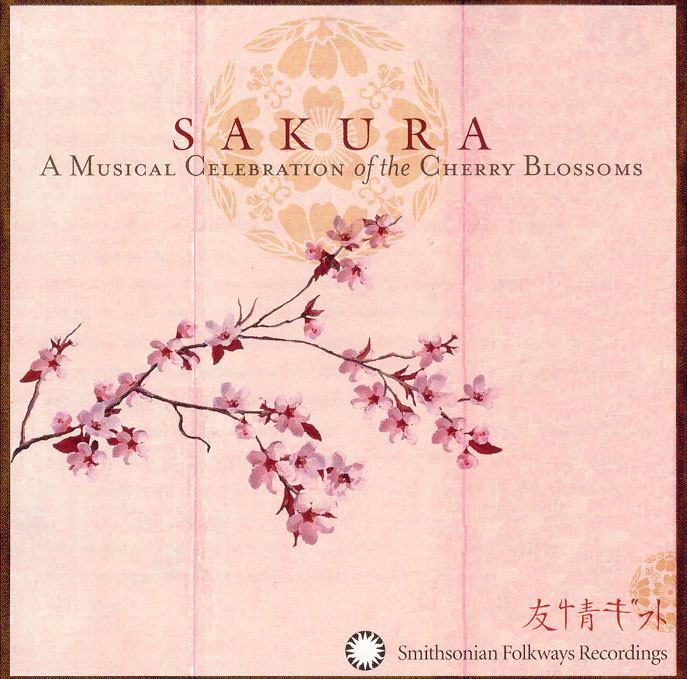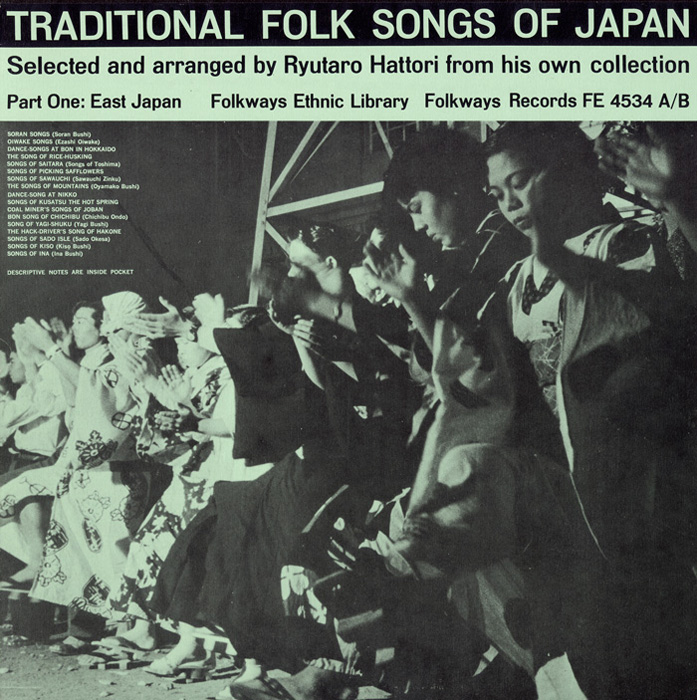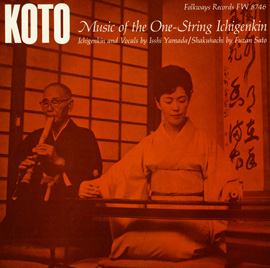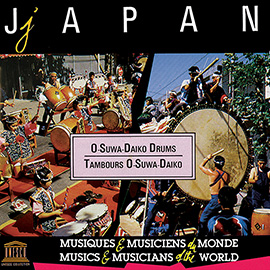Summary
Soran Bushi, a Japanese work song, allows for exploration into Japanese culture (work song/environment/nature) as well as exploration in creative composition/arranging. This unit takes students on an aural journey from the boats of the Hokkaido fishermen to their own perspective & interpretation, giving students a sense of pulse and rhythm as they compose and arrange, inspired by Japanese traditional music.
Suggested Grade Levels: 3-6
Country: Japan
Region: Hokkaido, Kitaki
Culture Group: Japanese fishermen, Japanese stonemasons
Genre: work songs
Instruments: Listening: shamisen, taiko drum, fue - flute, stones
Classroom Instruments: Orff barred instruments, hand drums with mallets, melodic instrument for teacher (recorder/voice/choice)
Language: Japanese
Co-Curricular Areas: Social Studies, Math (patterns/form), Language Arts, (Extension: Dance)
National Standards: 1, 2, 3, 4, 5, 6, 7, 8, 9
Prerequisites: Familiarity with Orff barred instruments, hand drum (use with mallet), musical form, ostinato (rhythmic and beat); Understanding of Haiku poetic form
Objectives:
- Listen critically to Japanese work songs
- Compare and contrast Work Song recordings
- Aurally identify melody & transfer to instruments
- Create and Perform pulse & rhythmic ostinati
- Create and Perform in original musical form
- Connect Haiku (Japanese poetic form) with Japanese songs (emphasis on nature)
- Identify successful compositional elements as performed by others
- Evaluate own work process and performance
Material:
- Map of Japan: Central Intelligence Agency website CIA.gov, World factbook, Japan
- Images of Shamisen, taiko drum (small), fue
- Voice or recorder for teacher
- Orff barred instruments
- Hand drums with mallets
- Paper and pencil for each student (for self assessment/reflection)
- Space for movement
- Audio equipment
- Recording of Soran Bushi: (cover to the right) found on:
Sakura: A Musical Celebration of the Cherry Blossoms
Smithsonian Folkways Recording
Unknown Artists (from Folkways 4534)
track #108 - “Soran Bushi” (Soran Song) - Recording of Songs of the Stonemasons (cover to the right) found on:
Traditional Folksongs of Japan
Kitaki Island Man
Folkways Records (1961) FW 04534
track # 203 - “Song of the Stonemasons”
Lesson Segments:
- Listen, Move and Sing “Soran Bushi” (National Standards #1, 4,6,9)
- Working the “Soran Bushi” (National Standards #1,2,3,4,6,7,9)
- More Work (Songs) (National Standards #1,2,3,4,5,6,7,9)
- Sea and Stone and Poetry (National Standards #1,2,3,4,5, 6,7,8,9)
1. Listen, Move and Sing “Soran Bushi”

“Soran Bushi”
from Sakura: A Musical Celebration of the Cherry Blossoms (2003) | SFW40509
- Listen (attentive): “Soran Bushi”
Play Smithsonian Folkways Recording: track #108 - “Soran Bushi”
Soran Bushi (Soran Song)
Unknown Artists (from Folkways 4534) - Who do you hear? (play segment)
- male/female (male soloist /female background)
- adult/child (adults)
- how many (one male, a few females)
- What do you hear? (play segment)
- instruments? (voices/shamisen - picked stringed instrument/drum, fue - flute)
- Where is it from? (play segment)
- Continent? (Asia)
- Country? (Japan)
- Teacher indicates specific origin as the island of Hokkaido, Japan
- Explore source of song
- Students describe music selection using WWW (Who? What? Where?)

- Visually Identify Hokkaido as northern island of Japan
- What would be important in terms of natural resources for people living an island? (water/sea life)
- Teacher explains history of “Soran Bushi” & Hokkaido fishing The term “soran” is a called used by fishermen when pulling the herring nets, like “Yo ho” or “Way hey” as used in North American & European sea chantey/work songs. It has no direct translation, but is instead an interjection/work chant. The Japanese island of Hokkaido is famous for is fishing. Going back centuries, migrant workers would fish the waters off of Hokkaido Island. Soran Bushi s a min'yo - folksong, specifically a work song. The word “soran” is called out to coordinate the work efforts of the fishermen. Different songs were sung to accompany different parts of fishing such as rowing, etc. “Soran Bushi” was sung as the herring were transferred from the large drift nets into smaller boats using hand nets. Like many work songs, there can be many lyrics to sustain the work effort.
- Listen (engaged): As Soran Bushi plays, demonstrate working pulse by pantomiming fishermen's work.
- Teacher play music as student pantomime working gestures to pulse.
- Teacher verbally recognizes student's ideas (“I see the pulling of a net”. “I see the throwing of a net”. It looks like some students are raising sails/ pulling ropes/ filling baskets or nets”)
- Is there anything you hear that would indicate this song would help fishermen work? (YES. Steady pulse/calls)
- Is there anything you hear that would indicate this particular recording is not for working on a boat? (YES. Instrumentation/voices include man & women) - seems arranged, old fishing crew would have been all male).
- Teacher emphasizes: This recording, with the accompanying instrumentation, is a stylized performance version of the old work song.
- Listen (enactive): Teacher plays Soran Bushi
- Students coordinate work efforts
- Students placed into small groups (+/- 5 children together)
- Each group selects a fishing gesture to replicate (can be the same gestures/different). Teacher solicits ideas from class if additional ideas are needed.
- As the music plays, the students move as a group to the pulse (may be a unison gesture OR a successive gesture OR choreographed movement as long as the pulse is clear).
- What call do you hear in the music? (hai hai) - an interjection - like saying “yes” or ”okay”.
- What is the work Soran Bushi used for? (chanting while hauling nets)
- Students add words: “hai hai” & “soran” as the song plays & group work (gesture pulse) continues.
- Read Soran Bushi words/translation from liner notes of recording:
- Sing Soran Bushi
- Read text and Sing along with recording
- Sing without recording
A common version of Soran Bushi in Japanese:
Ey yaren soran
soran soran soran soran hai hai!
Nishin Kitakato kamome ni toeba
Watasha tatsutori Namini kike choi
Yasa en yan sano Dokkoisho
A Dokkoisho! Dokkoisho!
Hamano anegoa O shiro hiriharu
Guin no huro kode Rada ni karu choi
Yasa en yan sano Dokkoisho
A dokkoisho! dokkoisho!
Extension: Compare and contrast Soran Bushi with an American/Northern European Sea Chantey work song (i.e.: Haul Away Joe, Away Rio, etc.)
Assessment: Teacher observation
2. Working the “Soran Bushi”
- Review listening to “Soran Bushi”
- Play Smithsonian Folkways Recording: track #108 - “ Soran Bushi”
- Students recall country/context/history of song.
- Students sing SORAN BUSHI
- Students recall pulse individually then in groups (same as previous lesson)
- Aurally/Orally identify repeated words/calls (hai hai/soran)
- review meanings from previous lessons
- Create chanted ostinato
- using the terms “hai hai” and “soran”, students develop in their small groups a chant that can be repeated over and over
- The students may use any number of “hai” or soran” terms in a rhythmic or pulse fashion.
- Chant should be easy to remember and repeat
- Perform chanted ostinato
- Each group, in turn, performs their ostinato 5 times along with the recording
- Allow for adjustments (groups ask themselves)
- Did the ostinato repeat accurately?
- Did it work well with the song?
- Do gestures or words need to change to work better?
- Repeat each performance with adjustments
- Reflect/Respond
- After each sharing, the audience/observers/class gives positive comments “I liked...” (verbal)
- After each sharing the performing group self evaluates with 2 stars and a wish (verbal)
- students give themselves 2 stars (state 2 things that worked well - positive comments) and a wish (If you could do it again, you would...?? - critique for improvement)
- Arrange ostinati
- Experiment with combinations of ostinati (do not have to be the same length)
- Listen to 2 groups perform at the same time.
- Do the 2 chants work well together?
- Why? or Why not?
- What makes for a good combination? (chants should not be the same/chants should fill in silence and use complimentary rhythms)
- Choose the order of performance
- Students decide what group(s) should be first/second etc.
- Students decide on the number of repetitions of each ostinato
- Teacher may write form arrangement on the board
- Perform ostinato WITH music
- Perform ostinato WITHOUT music
- Learn melodic ostinato
- Aurally Identify melodic pattern Orff barred instruments
- Students listen to the patterned as performed in the opening of the recording (transposed for instrumentation). Teacher transposes and performs pattern using voice on a neutral syllable OR a recorder or other appropriate instrument.
- Students find notes in the pattern on their barred instruments
- Successful students assist hose who need guidance
- If able, Add frame/hand drums played with mallets (culturally accurate)
- Combine melodic pattern with ostinato (no recording) to perform an original piece based on the Soran Bushi
- Students arrange chant ostinati with melodic ostinato.
- Perform chant and melody together
- Written Response: Student Individual Self Evaluation
- Students reflect on their work with the chanted ostinato and melodic ostinato.
- Did they fit together? How? How could it have been improved?
- Was the original “Soran Bushi” evident in the new work? How? How could it have been improved?
- What was your own personal contribution/accomplishment/idea/preference?
- At end of evaluation, students give themselves 2 stars (state 2 things that worked well - positive comments) and a wish (If you could do it again, you would...?? - critique for improvement) - written
Extension: Perform Soran Bushi Dance
Though Soran Bushi is a work song in Japan, it has also evolved over time to have an accompanying dance. In the folk tradition, the variations of this dance are numerous. Several theories exist about the origin of the dance. Consistently, it is credited to Hokkaido, where the song, itself, originated. It has been performed for several decades, but is recently quite popular and can be seen consistently at local bon dances and matsuri festivals. The dance can be very complicated, though many versions exist, some more accessible than others. It is suggested that the teacher select a video of the dance that best suits their students' abilities.
Assessment: Student self-evaluations in groups (verbally) and individually (written). Teacher observation.
3. More Work (Songs)

“Songs of the stonemason”
from Traditional Folk Songs of Japan (1961) | FW04534
- Listen (attentive): “Songs of the Stonemason”
Play Smithsonian Folkways Recording: track #203 - Songs of the Stonemason - Students describe music selection using WWW (Who? What? Where?)
- Who do you hear? (play segment)
- male/female (male)
- adult/child (adults)
- how many (3 men)
- What do you hear? (play segment)
- instruments? (voices)
- other? (pounding/ rocks possibly)
- Where is it from? (play segment)
- continent? (Asia)
- country? (Japan)
- teacher indicates specific origin as the island of Kitaki, Japan
- Listen (engaged)
- Students place stone rhythm on body as song plays
- Students pantomime Stone mason work as music plays
- What does a Stone Mason Do? (a craftsman who works with stone - to form & chisel shapes/build and design with stone)
- Show a stonemason's actions as the song plays
- Listen (engaged)
- Accompany Songs of the Stonemasons by using a rock to produce an audible pulse.
- Perform Rock passing
- Class sitting on floor in circle - Rocks for students
- Pass rocks on floor in circle (first one rock/then add gradually until all participants have a rock
- Divide into smaller groups (2-4 per class) for manageability & accompany recording
- Read background and lyrics (translation from liner notes)
- Review Soran Bushi
- Listen
- Review WWW verbally
- Compare/Contrast work songs
- Using a Venn Diagram, identify elements of each song that are alike and different

- Alike: may include: Work song/ From Japan/ Old songs-professions/keeps a pulse/male singer in each
- Different: may include: Soran Bushi has females/instruments/refined performance possibly for stage. Songs of the Stonemason has all men/pulse is constantly audible throughout song sounded by stone work/ sung as working/ call & response
Assessment: Teacher observation.
4. Sea and Stone and Poetry
- Review Soran Bushi & Songs of the Stonemason
- Identify Haiku traits (prior knowledge from classroom)
- Poem of 3 lines/17 syllables
- Line one=5 syllables/Line two=7 syllables/Line three=5 syllables
- Topic has relation to nature
- Identify elements of nature in songs
- Identify elements of nature in Soran Bushi (sea/fish/seagulls, island)
- Identify elements of nature in Songs of the Stonemason (stones, island, starts, night, morning)
- Create Haiku
- Individually create a haiku poem combining elements of nature from the 2 Japanese work songs: Soran Bushi and Songs of the Stonemason
- Create Performance Piece
- Working in small groups (+/- 5 students in each group), create a piece using any combination of
- Soran/Hai Chant Ostinati
- Soran Bushi melodic pattern (Orff barred instruments/drums with mallets)
- Stones
- Haiku (may choose one or use all)
- Select a form
- Perform ostinati with haiku
- Respond and Evaluate using the 2 Stars and a Wish process described in the previous lesson












